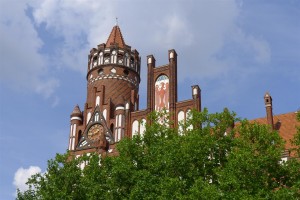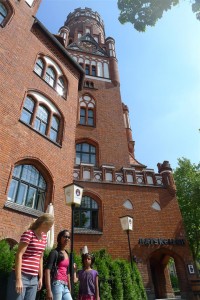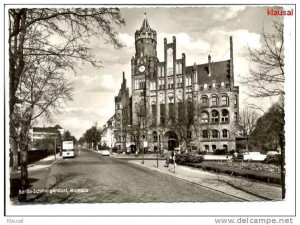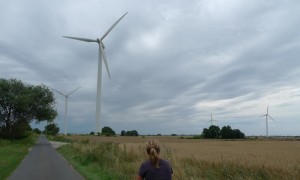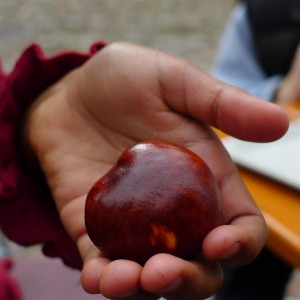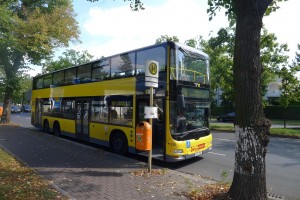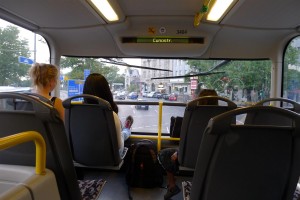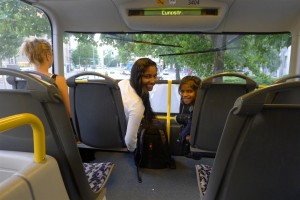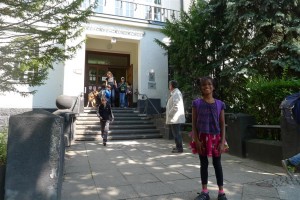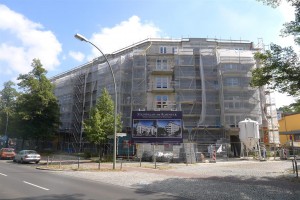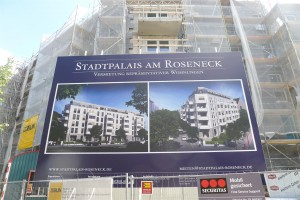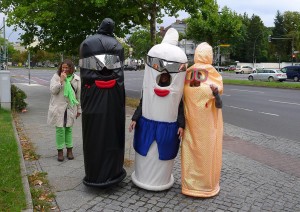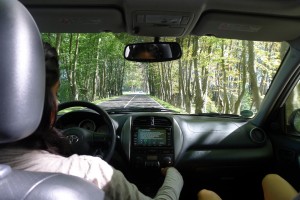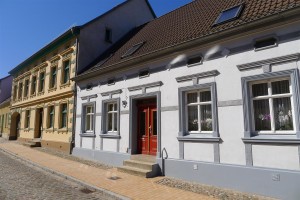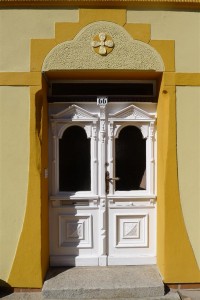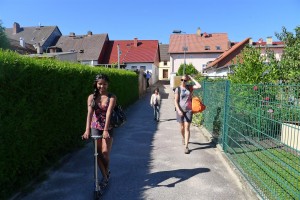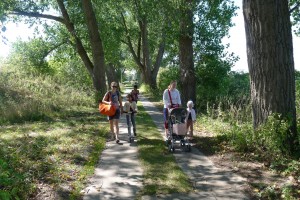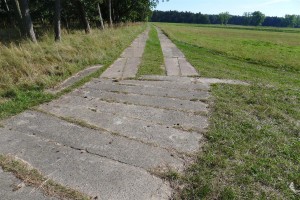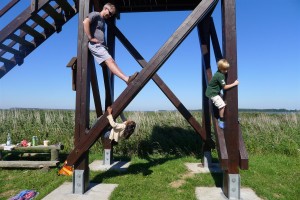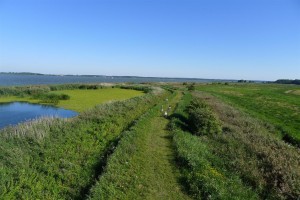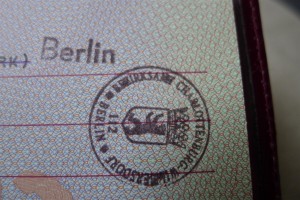I can’t say that I was enthusiastic about living in Schmargendorf when Annette first mentioned that her online searching had turned up an apartment there. It’s not that I knew anything about the area, but the name made me think of Schmaltz, the solidified chicken fat that is enjoyed spread thickly on slices of brown bread. My interest in the area was further tempered when I saw on a map how far it is from the more centrally-located, hipper locales like Kreuzberg, Mitte and Prenzlauer Berg. But the location looked like it would work well for Rani’s school, and it is close to the Grunewald park. The apartment itself is wonderful, and — the clincher, in Rani’s opinion — the kitchen cabinets are bright red.
Outside the center of the city, Berlin feels to me like a tapestry of towns. As the city expanded over time, it absorbed what had been outlying villages with their own town centers and neighborhoods. I read that “Schmargendorf” was first recorded as the name of our area in 1354. Through the 19th century, Schmargendorf was a small farming village on the outskirts of Berlin. By the turn of that century, the village had its own local administration, and in 1920 it officially became incorporated as part of greater Berlin.
This area’s historic town hall or “Rathaus” is adjacent to Mamta’s school, one block over from our apartment. It was built in the year 1900, in a style that is described as “Brick Gothic, with elements of Art Deco.” The building survived WWII largely intact, although the explosion of a bomb nearby blew out the original stained-glass windows.
The Rathaus includes a restaurant in the cellar called — what else? — the Ratskeller. In this case, Rat refers to a council or advisory board — like our hometown of Walpole’s governing selectboard — rather than to a rodent.

